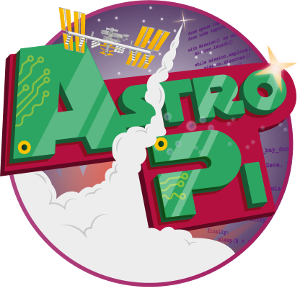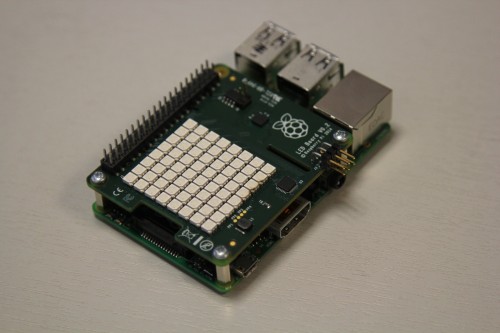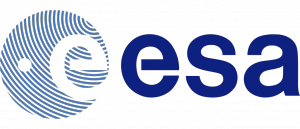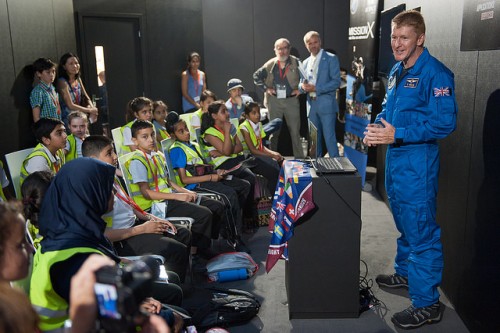| Todd McFarlane’s Spawn has been solely available in printed form for all 250 issues. The entire library of Spawn, as well as all twenty volumes of Spawn Origins, are now available digitally for the first time via Comixology. In an interview with the Washington Post, Todd said that he wanted to be an early adopter of digital with Spawn, but the comic book stores wanted a series that would be sold exclusively in brick and motor stores. Finally, the call was made by Image to take it digital, because of declining sales. Spawn launched in 1992 at Image Comics shortly after McFarlane became one of the founders of the publisher with a group of former Marvel colleagues. For the last 23 years over 5,300 pages have been generated finally they are all available to read on your smartphone or tablet. Todd McFarlane’s Spawn Available on Comixology is a post from: Good e-Reader |
A Semi-automated Technology Roundup Provided by Linebaugh Public Library IT Staff | techblog.linebaugh.org
Monday, February 16, 2015
Todd McFarlane’s Spawn Available on Comixology
AMC Releases Better Call Saul Digital Comic
| The hotly anticipated Breaking Bad spin-off Better Call Saul has been getting rave reviews and is one of AMC’s most widely watched shows, ever. In order to drum up even more eyes on the television show, a free digital comic has been released. The comic follows the adventures of Saul and everyone's favorite righthand man, Mike, spinning off from Breaking Bad. This is the second time the show's writers have used comics to offer a supplemental storyline, the first being with the original series. The digital comic is entitled Client Developmentand includes 20 fully colored and illustrated pages. Instead of being a download, you can read it online in any internet browser for PC, smartphone or tablet. AMC Releases Better Call Saul Digital Comic is a post from: Good e-Reader |
URL: http://goodereader.com/blog/digital-comic-news/amc-releases-better-call-saul-digital-comic
Amazon Drone Delivery Hits Regulatory Snag
|
These regulations include a few caveats for commercial drone operation that stand to throw a wrench in Amazon’s plans. While the restriction that commercial operators must be at least 17 years old and have an operator’s license from a regulated facility are not too surprising, the issue of “line of sight” operation is at the crux of Amazon’s issue. Unlike military or police applications of drone technology where the operator may be literally thousands of miles away, the FAA proposal requires commercial drone operators to remain in full view of the drone at all times. That won’t be very convenient for delivering a book from a fulfillment center in one state to a reader’s home in a neighboring state. Amazon has already voices its complaints regarding the FAA proposal and acknowledges that testing of drone delivery can move forward in international markets with less stringent regulations, but that the company will work to demonstrate an acceptable solution. The FAA, for its part, has also acknowledged that its proposed regulations are a jumping off point for discussions that could last a couple of years before the actual laws are put in place. The agency has cited current air safety regulations as its basis for developing drone regulations, and admits that drones are a wholly different technology than a commercial airplane.
Amazon Drone Delivery Hits Regulatory Snag is a post from: Good e-Reader |
URL: http://goodereader.com/blog/bookselling-3/amazon-drone-delivery-hits-regulatory-snag
Comico Releases App to Turn Selfies Into Manga
| Ever wanted to turn your life into a manga? Taken a silly selfie and thought,’ this belongs in a comic strip?’ The app of your dreams has just been released. Japanese app company, NHN PlayArt, has partnered with the company comico to create an app that allows you to take selfies and turn them into a comic. The app, called ‘comico CAMERA,’ has several different features. There are 35 different manga-page templates to choose from, along with 18 types of speech bubbles, and an array of comico characters to stamp on. The app also features 27 filter types, ranging from the ‘comic’ filter to shojo manga sparkles. Once you’re finished building your masterpiece, you can share the pictures on Facebook and Twitter. The app is available on Android and iOS devices. It is free to download, but must be used on an Android 4.0.3 or newer, or iOS 6.0 or newer. The app itself and all the features are in Japanese, but that only adds to the authenticity of your pictures. Download comico CAMERA here! Comico Releases App to Turn Selfies Into Manga is a post from: Good e-Reader |
URL: http://goodereader.com/blog/manga-and-anime-news/japan-releases-app-to-turn-selfies-into-manga
Digital Newspaper Bundling for Added Value
|
One demographic of news outlets that has been hardest hit in the shifting news behaviors of the public has been the locally-owned newspapers. These papers rely on a dedicated subscribership and local businesses for advertising revenue, while providing a valuable service to the local public that major internet news companies cannot provide, namely coverage of local events and topics of interest. The Iowa-based Quad-City Times, which grew from its first publication founded in 1848 and changed hands over the years until it was bought by its current owner, Lee Enterprises, in 1915, provides coverage of portions of Iowa and Illinois, and has subscribers across nine adjacent counties in those two states. But even with a large area to report and subscribers in a variety of locations, the need to adapt to the changing landscape was just as important for this paper as it was for any major news source. That’s why the Times has announced a digital deal that’s too good to pass up. Subscribers to the print edition–who by default are now subscribers to the digital edition–are also entitled to a full digital subscription to the Washington Post, one of the most prestigious newspapers in the country and the property of Amazon founder Jeff Bezos. According to a post from Jan Touney, executive editor of the Quad-City Times, “You'll get the news from Washington and around the world, including features, sports and political commentary. The Post is putting considerable resources into covering the Iowa political scene in this year leading to the 2016 caucuses, and you'll get additional insights to complement the coverage the Times provides from political reporter Ed Tibbetts, Des Moines Bureau Chief Erin Murphy and Lee Enterprises' four other Iowa newspapers.” This type of value-added offer for digital readers is becoming an increasingly common step for any industry that looks to entice consumers and retain a loyal following. A number of industries and reading sectors, including the hospitality industry and public and academic libraries, have already turned to widespread digital access to support their customers, and this partnership can serve as a model for bridging local, state, national, and international coverage for digital readers.
Digital Newspaper Bundling for Added Value is a post from: Good e-Reader |
URL: http://goodereader.com/blog/digital-publishing/digital-newspaper-bundling-for-added-value
Digital Publishing Startup Screwpulp Gets a Facelift, New Name
|
This is a part of the reason that the Memphis, Tennessee-based digital publishing startup Screwpulp, first interviewed by Good e-Reader at Book Expo last year, has undergone a facelift of sorts, with the most profound change being an entirely new identity as Leafless. According to an explanation on Leafless’ (formerly Screwpulp) website: We're excited to introduce our new name, Leafless! Our focus has always been supporting authors with self-publishing in the digital space. We've built an open and accessible platform centered around this. We offer a no-cost, no-risk publishing solution for authors. We offer ebooks to readers in the most common formats. This allows them to enjoy reading on their preferred device. We want to continue to build on the great community and support our customers give us. Our new name, Leafless, aligns perfectly with those aims. The name is much more approachable and is still consistent with our mission. Currently, we sell e-books. E-books are a digital medium. There are no physical pages. What could you call a book with no pages? Leafless! Why the name change? We realize that many of you loved our old name, Screwpulp. It was edgy and very bold. That's one of the things many love about us. When we began we wanted to be something fresh and different, and the Screwpulp name was great for that. Our Founder and CEO, Richard Billings, came up with the name. It combined the ideas of the screw press and pulp fiction. Yet, there have always been some who took Screwpulp in a less than positive light. We want our customers to know that we're listening. We talked with a lot of our customers, engaged different groups, and tested ideas. Obviously, several just didn't care for the name. We wanted a name that our customers would embrace. A name that aligns with our core values. One that will help us continue to grow and serve authors and readers. That name is now "Leafless." The recent name change took place after Screwpulp announced its website would be down for maintenance on February 9th, then relaunched with the update last Friday.
Digital Publishing Startup Screwpulp Gets a Facelift, New Name is a post from: Good e-Reader |
Astro Pi: Mission Update 1
| I’m sure a few of you are wondering why we’re not screaming about this from the rooftops, right? Okay: stand back, here we go. To quote the Portal space core: "SPAAAAAAAAAAACE!!!!!" Back in March 2014 Eben sent a casual email around the office asking if anyone wanted to join him at a meeting between the Surrey Space Centre, Airbus Defence and Space and Surrey Satellite Technology (SSTL). So, being a space geek, I tagged along and we found ourselves talking about the possibility of using a Raspberry Pi in space flight for a variety of applications. There was excitement over the possibility of flying several compute modules on a cube-sat for a space software lab experiment, and Stuart Eves, who is the lead mission concepts engineer at Airbus Defence and Space, was especially enthusiastic about using Raspberry Pi as a mechanism for educational outreach by UK Space (a trade association of companies that contribute to the UK space industry). A month or so later, another meeting was on the cards, and this time the UK Space Agency (UKSA, an executive agency of the British Government) was going to be there. That’s when I met Libby Jackson and Jeremy Curtis. Libby and Jeremy were behind the Great British Space Dinner competition you may remember from last year, and, between them have years of experience in human space flight. Doing something with British ESA astronaut Tim Peake’s six month ISS mission was on the table, but we were not sure how it was going to look. It was clear to everyone that the existing popularity of Raspberry Pi, the connection with computer science education, and the forthcoming changes to the UK curriculum would cast a wide net over the UK; and together could generate a lot of participation in a potential coding competition. We realised that a situation where UK schools could own the same computer hardware that was in space had never, as far as we knew, existed before. Doug Liddle, head of science at SSTL, told me that the possibility to achieve this was more exciting than anything else the UK Space trade association had been considering for Tim Peake’s flight. So over the course of several further meetings we put together an outreach plan that would provide a range of computer science challenges to cover the diverse needs of the space industry. At the core of these would be a Raspberry Pi with a range of peripherals and sensors which would act as the platform for the pupils to send their software into space. Libby and Jeremy took the plan to the European Space Agency (ESA) for approval, and it was well received. To very briefly summarise: the programme would be split into two halves, with some activities that Tim would do up on the ISS during his mission and a competition run on the ground before blast-off. At this point we still hadn't decided a name for it and I think it might amuse you to see the names that we were considering:
As the year went on, we were well into discussions about what the hardware would be like. It was agreed that it would be a B+ HAT that could be mass produced and made widely available to schools and the general public. The same HAT would then be flown, along with Tim’s Raspberry Pi, to the ISS, thus creating the situation where all school pupils have exactly the same computer hardware as the astronauts are working with in space. They would be able to write code against their own Pi, and that could then be sent to the ISS and run on Tim’s Pi! If you win the Astro Pi competition this is exactly what will happen to your code. We didn’t want the Astro Pi HAT to have any single purpose, but rather to be a toolkit that could be employed in many different ways. Initially the list of sensors we wanted to have on it was enormous, and this had to be trimmed down due to the physical space constraints of the HAT standard. The sensors that made the cut were chosen for their ability to provide learning opportunities in the context of space flight. The solar arrays on the ISS, for instance, each have about 12 gyroscopes to control their orientation so that they can track the sun. Accelerometers are used to measure forces exerted by thrusters on all space craft, and magnetometers work like a compass so you can know which way you’re facing in relation to the Earth’s magnetic field. We also knew that we wouldn’t be able to plug the Astro Pi into anything like a monitor or keyboard, and that it would have to run headless. Having some kind of visual output, despite this constraint, would be important: so this is why we included the 8×8 matrix of LEDs. Use it wisely! So all that was the easy part. Meanwhile we began the process of getting the hardware approved for space flight with ESA. Space conditions are challenging, and because of this there is an abundance of testing that must be done for any object going up to the ISS. What you need to possess, to be allowed up there, is a flight safety certificate. The process to obtain this for Astro Pi is still ongoing as I write this blog entry. There two kinds of payloads (space cargo consignments): they’re called “educational” payloads and “real” payloads. Educational payloads are usually inanimate objects, like balls which are sent up to collide together in zero gravity to demonstrate the conservation of momentum effect or similar. Real payloads are things like the complex machines that are designed to perform a job on the station, or robotic arms that can be controlled by an astronaut. The thing that differentiates the two is the simple question: does it plug in and turn on? So we found ourselves in the unique situation of being an educational payload that has to consume power from the ISS mains. This meant that our path through the safety approval process was not going to be trivial. Fortunately we have some of the best people in the UK Space industry on our side, who are actively working towards making this happen. ESA have also hooked us up with engineers and safety experts, who are helping guide us through their processes too. It’s been an absolute pleasure and a privilege to work with these folks. Here is a list of some of the tests we have to do:
We plan to shout about each of these on social media in the coming months, as they happen, so stay tuned! Once we have the flight safety certificate we can be scheduled for a launch. This was originally planned to be an ATV or Space X Dragon capsule, however it now looks more like we’re going up on the Soyuz rocket with Tim Peake himself. I can’t believe I just typed that. I had opportunity to meet Tim at the Farnborough Air Show last year too. He was there doing the closing ceremony of Mission X with the UK Space Agency, but was able to spare an hour of his time to attend one of the UK Space progress meetings. We gave him a general Raspberry Pi demonstration and talked a bit about the competition and what he would be required to do. He was really enthusiastic and said he wanted to make it as interactive as possible, even suggesting the possibility of a live debugging session with the competition winners. Imagine randomly getting a phone call from the ISS: “Hello this is Tim Peake on the International Space Station, I’ve just found an error on line 21 of your code. Does it work properly on yours?” I don’t know if that will happen, but it might! Aside from the flight safety procedures, a lot of mission specific documentation needs to be produced too. You may not know this, but a lot of the European crew operations on orbit are controlled from a little house in Lucerne, Switzerland. Libby Jackson and I paid them a visit in December last year to give them an orientation on the hardware. They’re a division of Lucerne University called BIOTESC, and they write all of the step-by-step procedures that the crew follows during day to day operations. Understandably they all have very good personal and professional relationships with the crew members. They’re a lovely bunch of people who are going to become super-competent in the use and maintenance of a Raspberry Pi. They’ll be required to advise Tim should anything not work as intended up there. We had one of the Astro Pi prototype units with us and went through a few mock procedures that Tim would be expected to do. Libby took the opportunity to dust off her coding skills and spent about an hour programming a nice countdown sequence on the LED matrix which she blogged about here. Back in the UK, the Astro Pi media drive was beginning to roll into action. Many people from UK Space trade association were working behind the scenes to get the website ready, setting up interviews and organising press conferences. The announcement was scheduled for 10 December at the CGI offices in Kings Cross, London. Press were invited and we had a number of school students from Weydon School in Surrey join for a Raspberry Pi workshop during the conference. The full report from that day can be found online here. The BBC were involved too and technology correspondent Rory Cellan-Jones caught up with Tim and interviewed him about Astro Pi. Meanwhile, our artist and animator, Sam Alder, who had already designed the Astro Pi logo, was busily working on story-boarding and producing a cartoon about the competition. We were fortunate to be allowed to record Tim Peake’s voice for it. Sam and his colleague from Saladhouse Studios, Scott Lockhart, met up with Tim to do the recording at a hotel in London. He told me that they sat down, started looking through their notes, and looked up at Tim in his ESA polo shirt and whispered: “I can’t believe this! What the hell are we doing here?” The final cut of the cartoon was kept under wraps with the intention to show it during the competition launch at BETT 2015 for the first time.
We had planned to do a live link interview with Tim, who would be in the United States, during the BETT arena presentation. Sadly this fell through because he was travelling on that Friday. So instead we organised a Skype call the night before, and I was the lucky one who got to interview him! It was recorded on my computer at home. This was my own “What the hell are we doing here?” moment; I was a bit like a starstruck rabbit caught in the headlights for the whole interview. So the next day Lance Howarth from the Raspberry Pi Foundation, Jeremy Curtis from the UK Space Agency and Doug Liddle from Surrey Satellite Technology gave an exciting presentation to a crowded BETT arena. Here is the Skype interview: The cartoon animation was then shown to round off the presentation. This is by far my favourite of all the animations Saladhouse have done for us. So that just about brings us up to date. ESA have told us that Astro Pi is the most advanced educational payload that they’ve seen, and that they’re watching what happens here with interest. If we have a high degree of participation in the competition then ESA may decide to repeat the whole process for the rest of Europe with another astronaut. So please do your bit and tell everyone you know! We want every school in the UK to participate! We’re working hard to get the Astro Pi HAT manufactured in volume and we’re hoping for them to be available by the middle of March. But don’t forget that you can win them too! Secondary school sign up is now live so head over to astro-pi.org and read more about the competition rules. Primary Schools enter here. Secondary Schools enter here. Thanks for reading this far; I know this is a long post. One final thought I’d like to leave you all with is regarding an awesome tradition of the Russian space program that is still observed on all Soyuz launches to this day. The Russian commander is responsible for choosing a talisman that hangs inside the capsule. It’s a visual indicator of when the spacecraft has reached weightlessness and dates right back to Yuri Gagarin (the first person in space). The talisman is usually some kind of stuffed toy, and if you watch the most recent launch video below, where Italian ESA astronaut Samantha Cristoforetti went up, you’ll see they used Olaf from Frozen! Watch for the main engine cut off at 09:15 for when he shoots forwards and becomes weightless. Can anyone think of a stuffed toy that might be appropriate for Tim’s launch? |
Lucy -The eternity she wished for- Visual Novel
| Are you looking for an enticing story with amazing visuals, cool character designs, a good mood setter as well as something deep and heart felt? Well, if you are a fan of Visual Novels, you need to check out M-Vizlab (Modern Visual Arts Laboratory)’s Lucy ~The Eternity She Wished For~. The story is as follows: ‘In the near future, androids have become the way of the norm. Emotionless husks of metal have become a part of human society, much to the dismay of the boy. The robot he found at the dump site though, this one was different. It laughed, it cried, it smiled, it has dreams, just like a human…’ The game was originally released back in 2010 and received high praise among the Korean community for it’s wonderful story telling. M-Vizlab is now currently in the works of remaking this beautiful game with updated graphics and bonus scenarios and is targeting the international audience. The game has been fully and successfully funded on Kickstarter and has been greenlit on Steam! The VN will also be released on IOS devices some time in the future, however there has been no word as of yet for an Android version release. We will just have to cross our fingers for now! The team had invested over 100 plus hours into the original game, meeting, writing, drawing and coding, all without seeing a single paycheck. You gotta love that kind of dedication, and it certainly looks like it’s paying off. To the faithful Visual Novelists, this will be a game you need to have in your library! If you’d like to check it out for yourself, you can visit their Steam Page and their Kickstarter. Lucy -The eternity she wished for- Visual Novel is a post from: Good e-Reader |
URL: http://goodereader.com/blog/manga-and-anime-news/lucy-the-eternity-she-wished-for-visual-novel












